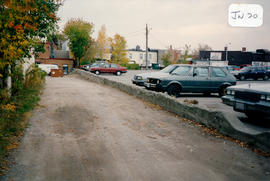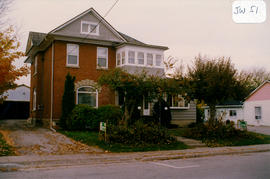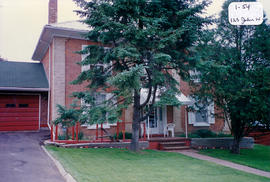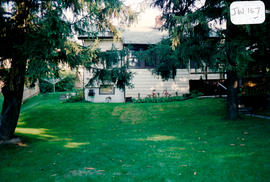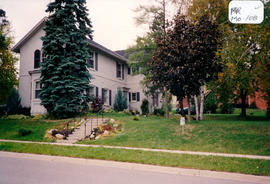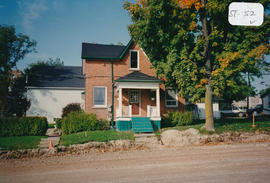- CA BWGPL GJ-HB-2017-04-05-10
- Pièce
- 1995
Fait partie de George Jackson fonds
This photo (from 1995) shows the remains of the foundation wall of a large, natural-ice skating rink that was once located on the southeast corner of Moore (Lovers’ Lane) and 20 John St. West. The rink, built in 1910, was owned by Thompson Fisher. It was run by Fred McKay and Bethel Sawyer. The ice surface was also used as a curling rink. There were seats for spectators and the ticket office was on the east side. There was a men’s change room and hoses for watering the ice behind the rink (where snow was piled). A lunch room, ladies’ change room, and toilets were on the west side. Overhead was a viewing platform and an organ provided skating music. There was a very large water tank in front for fighting fires and making ice. The rink was well-patronized before the war and skating to band music was also very popular. The entrance fee was 15 or 25 cents. The curling surface was used by quite a number of older people. Horse shows were held here in the summer. The cleanup man was “Sank” Lowe. He wore a white uniform and used a two-wheeled barrel, broom, and shovel for picking up manure. Box lacrosse was also played here. The facility was demolished after the war and the property became a town parking lot. (1, 2)
Sans titre

